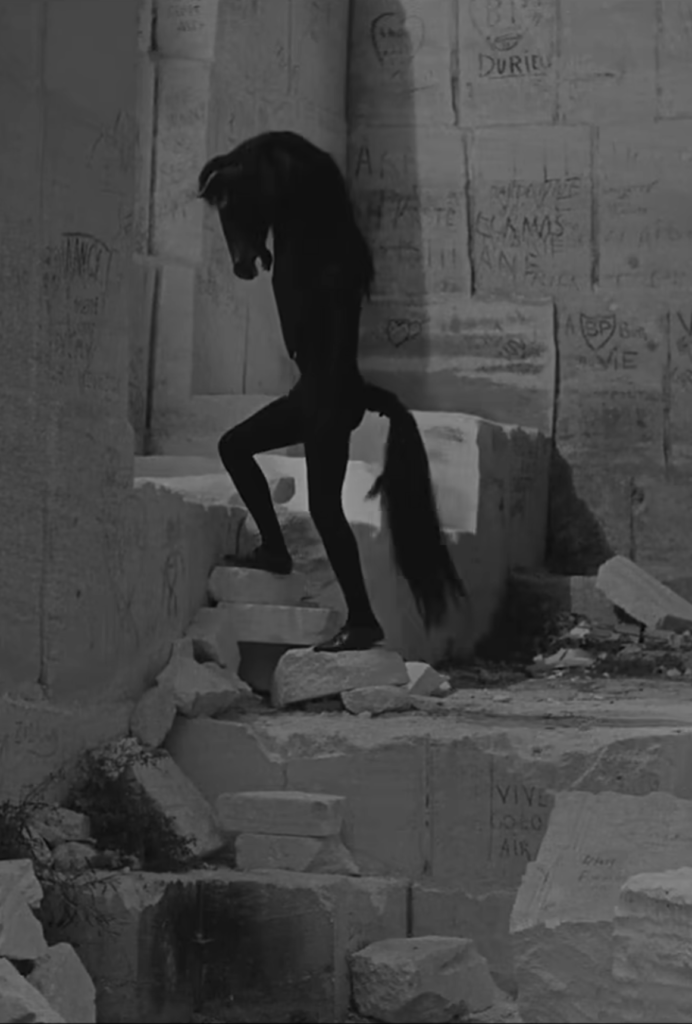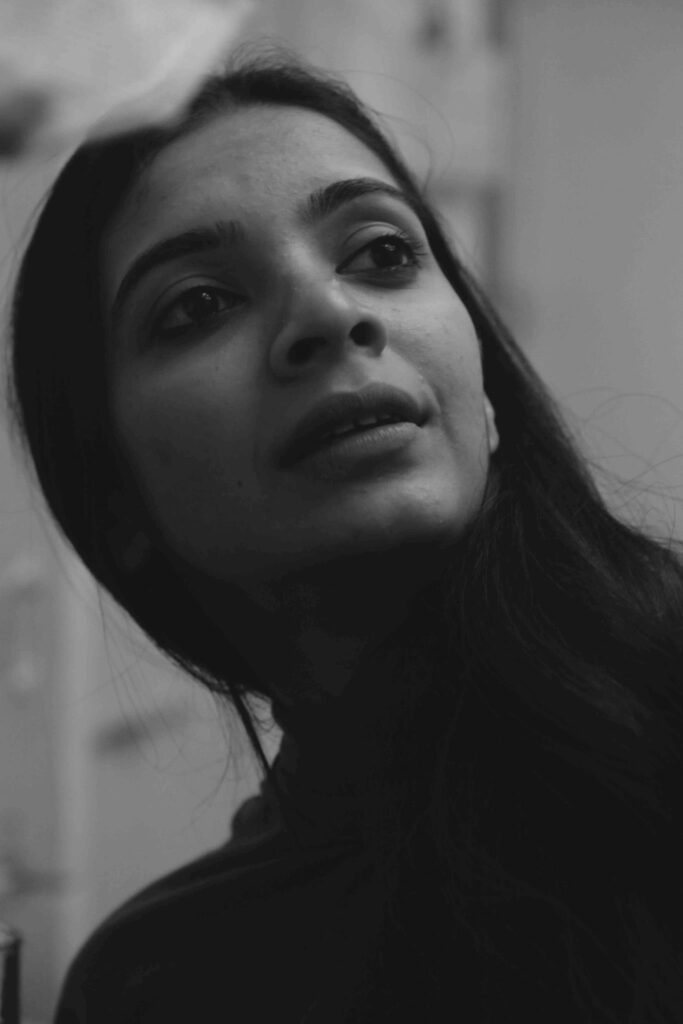
Gatika is a measure of time.
It is said that time in India was measured in 24 minute cycles. There are sixty 24 minute cycles in a day, and each cycle of 24 minutes is called a gatika.
In the Nyingma-Gelug tradition, a gatika is said to be the perfect time to complete a task with perfect focus, and in cinema, we measure persistence of vision in 24 frames per second (fps).
In 2014, I unplugged from all city networks and started traveling by road or on foot through rural India full-time. I met masters of the handmade crafts, farmers and soothsayers on my path.
Watch vignettes from our cumulus of work over these years at GATIKA right here : 24 glimpses into the lives of women, myths, rivers and that wonderful Idea of India I grew up around.
Milann Tress John has written and directed films exploring the themes of transgender rights, ethnomusicology, Indian craft processes and indigenous folk art practices across rural India. She specialised in Film as a post graduate at the National Institute of Design, NID Ahmedabad and graduated as an IT engineer from the Army Institute of Technology, Pune.
At Bombay-based 21 Tigers Entertainment, as Creative Director, she programmed and directed film, animation, music composition and campaign strategy for Television shows commissioned by National Geographic, Fox Life, Vh1, Z Café and Epic TV. She set up GATIKA, an independent film production studio with a focus on long format cinema and original branded productions, 10 years ago in Goa.
She has operated for 15 years as a Writer-Director, Cinematographer, Editor and Sound Designer for independent films and branded creatives. Her films have screened at festivals worldwide and have received several awards, including the ‘Best Sound Design in Documentaries’ for Notes from a Craftsman at the Indian Recording Arts Academy Awards, the ‘Long Film Commendation Award’ for The Little Princes of Rajasthan at the International Folk Film Festival and the ‘Compass-Perspektive Award’ at Berlinale. She was the cinematographer for Ladies Only which was awarded the ‘Second Best Long Documentary’ at the International Documentary and Short Film Festival of Kerala, among 3 other international awards and 7 nominations.

Milann visits as a guest faculty to teach two Film Theory related courses with a focus on Folkloristics at the National Institute of Design (Madhya Pradesh), Chitkara University (Chandigarh) and Nirma Institute of Design (Gujarat) amongst others. She has taught a Systems Design course called ‘Environmental Perception’, at the National Institute of Design, Ahmedabad, interpreting rural environments through design processes and cartography. She also consults for brands like Godrej & Boyce and other research agencies for the same. Milann accepts commissions as a curatorial guide and space designer for galleries, architects and independent artists. Six years ago, she took up pottery as a discipline.
Originally from Kerala, born in Assam and having grown up all across the country, Milann is fluent in Hindi, Malayalam, studied French, and understands Tamil, Assamese, and some Gujarati, Marathi.
AWARDS & NOMINATIONS
Winner | Compass-Perspektive-Award for ‘Ladies Only’ at Berlinale 2022 | GERMANY
Winner | Second Best Long Documentary Award for ‘Ladies Only’ at International Documentary and Short Film Festival of Kerala 2022 | INDIA
Winner | Best Women’s Film Award for ‘Ladies Only’ at Nepal Cultural International Film Festival, Kathmandu 2023 I NEPAL
Nomination | BIFF Mecenat Award for ‘Ladies Only’ at Busan International Film Festival 2021 | SOUTH KOREA
Nomination | Teddy Award for ‘Ladies Only’ at Berlinale / Berlin International Film Festival 2022 | GERMANY
Nomination | Best International Documentary Feature Film for ‘Ladies Only’ at Budapest Independent Film Festival 2023 I HUNGARY
Nomination | DocPoint YLE Award for ‘Ladies Only’ at DocPoint – Helsinki Documentary Film Festival 2023 I FINLAND + DocPoint – Talinn Documentary Film Festival 2023 I ESTONIA
Nomination | First Steps Award for ‘Ladies Only’ at First Steps – Der Deutsche Nachwuchspreis | GERMANY
Nomination | A38- Production Grant Kassel-Halle for ‘Ladies Only’ at Kasseler Dokfest 2022 I GERMANY
Winner | Best Sound Design in Documentaries for ‘Notes from a Craftsman’ at Indian Recording Arts Academy Awards 2018 I INDIA
Winner | Long Film Commendation Award for ‘The Little Princes of Rajasthan’ at International Folk Film Festival, Kathmandu 2018 I NEPAL
OFFICIAL SELECTION & SCREENINGS
부산국제영화 Busan International Film Festival | SOUTH KOREA
72nd Berlinale | GERMANY
JIO MAMI Mumbai Film Festival / India Gold Selection | INDIA
15th John Abraham National Awards, Kerala | INDIA
FemFilm, Oslo | NORWAY
Sheffield International Documentary Festival | UK
London Indian Film Festival | UK
Birmingham Indian Film Festival | UK
Manchester Indian Film Festival | UK
International Documentary and Short Film Festival of Kerala | INDIA
Indian Film Festival of Melbourne | AUSTRALIA
Indo German Film Week | GERMANY
Das Fünf Seen Film Festival | GERMANY
Filmtage Globale Perspektiven | GERMANY
Asian Film Festival Barcelona | SPAIN
Kasseler Dokfest | GERMANY
Nepal Cultural International Film Festival, Kathmandu | NEPAL
DocPoint Helsinki Documentary Film Festival | FINLAND
DocPoint Talinn Documentary Film Festival | ESTONIA
Stranger than Fiction Documentary Film Festival | GERMANY
Vikalp, Mumbai | INDIA
Bangalore International Centre | INDIA
Urban Lens Film Festival, Bangalore | INDIA
Women’s International Film Festival, Kerala | INDIA
Ethnocineca – International Documentary Film Festival, Vienna | AUSTRIA
Museum of Art and Photography (MAP), Bangalore | INDIA
Channel 4 | UK
Architecture Film Festival, Rotterdam | NETHERLANDS
Centre for Modern Indian Studies | GERMANY
Beyond Borders Feminist Film Festival, New Delhi | INDIA
SamaBhav Film Festival | INDIA
Dokomotive Platform, Cologne | GERMANY
Filmhaus Kino, Cologne | GERMANY
Les Orientales – Un autre Orient, Nantes | FRANCE
World Sacred Spirit Festival, Nagaur, Rajasthan | INDIA
IndiEarth X-change, Bangalore | INDIA
Curieux Voyageurs festival, Saint-Étienne | FRANCE
Al Kamandjâti Festival | PALESTINE
Festival of Sacred Music, Perpignan | FRANCE
Festival du Film de Lama | CORSICA
International Folk Music Film Festival | NEPAL
WOMEX | POLAND
Bangalore International Centre | INDIA
Rendez -Vous du Carnet de Voyage, Clermont Ferrand | FRANCE
Rainforest World Music Festival, Borneo | INDONESIA
Aga Khan Museum, Toronto | CANADA
La Grande Rencontre, Montréal | CANADA
Festival de Fès des Musiques Sacrées du Monde | MOROCCO
Brands we had fun working with <3


MICRO DOC 13#microdoc13
MICRO DOC 13
As soon as Makhon da saw Harxo, he went to his wood working studio and started playing this bamboo instrument you hear. Harxo had shown him how to make this particular form, an evolution from the Indonesian Angklung and the Assamese Kot-long. I just about managed to start rolling camera by the time they all started playing together, there was no pausing both of them. Harxo has studied tabla at the School of Performing Arts, Baroda and has been crafting architectural spaces and objects out of bamboo, wood, and whatever else he gets his hands on, for as long as I have known him.
Whenever I watch the world burn, I thank the stars for all the times I got to witness raw magic, like at this village at the intersection of three little rivers. I find it incredible I was born in Assam. I thank the water, the trees and these generous, dignified folk. I thank my camera, and that I can wield it. Life feels worth protecting. Grief becomes love. No one is free, till all of us are free.

MICRO DOC 12
Around the time all the independent Urdu printing presses were being shut down across India, I was told to shift houses in Bombay. So I packed my books up and left for Berlin solo for three months. I spent most of those days on the streets or around paintings and sculpture. It was incredible to watch them carefully preserve what they thought was of value, though it kind of made sense since the humans themselves tended to not speak much to each other. It was a great time of unlearning, you can’t smell the rain on corridors of endless cobblestones. I completely jumped into the villages of India full-time ever after.
Got inspired to send this out today after listening to Chandrashekhar Azad speak, he’s asking all to come together on the 11th of September in Delhi. He has such a gentle, solid, almost kindly way of inviting everyone to stand up for what they value, so much unlike urban folk with the shrill tones and quick labels. I think it’s superb that he’s in a position of power. The only way to talk about freedom, is through Empathy. I can’t wait to catch him speaking live some time.
Images : A long afternoon in Berlin. Yes, that’s Anne Frank in the first frame and there’s a Rodin in there. Headphones are great for subtle sound, superb artist this guy.

MICRO DOC 11
Two days ago I had a fever dream, I was talking in my sleep. I remember walking through a forest, it was raining very heavily. I was negotiating with people to find a way ahead, but I don’t remember their faces. All I remember is getting an elephant, it was somehow given to me. Everything was so calm after that, I walked onward with what I can only describe as peace inside, nothing could go wrong. I woke up in the morning and that’s what I announced out loud, “ I got an elephant : )! ”
I shot these images in a woody jungle in Kerala a while back, this elephant is called Nandini by those who know her. The guy talking to her is called Narayanan.

MICRO DOC 10
Palkipriya Gogoi is a percussionist from Assam who plays three instruments, she was in the fourth standard when I met her. India should be providing sound, fertile futures for the many bright sparks our country is teeming with. The more the chaos and apathy rises, the stronger I feel for disciplined practitioners. More power to self taught seekers!
Harxo studied tabla at the School of Performing Arts, Baroda, so I had the joy of shooting and recording sound around three mad percussionists in a room full of drums on this particular afternoon.

MICRO DOC 9
Met these ladies by pure chance in Assam. Saw a flash of aqua in the midst of a thicket and insisted Harxo stop riding and we go explore. Super that we did! All the women in the house were readying threads to fasten onto the tat hal loom, I had my camera and this is my favorite blue, I was in heaven.
After the threads are stretched to the desired length, they are smoothened and carefully checked for broken ends. Smoothening and knotting the broken threads takes a great deal of time. It is done inch by inch.

MICRO DOC 8
Text & voice of Arundhati Roy, featuring imagery I shot in a small, water-hungry village in Gujarat where cotton is picked and sorted by children and women, the bottom of the 100% Cotton couture pyramid.
‘At the time, having just won the Booker Prize for my novel, I had inadvertently been cast as one of this aggressive New India’s cultural ambassadors. I was on the cover of major magazines. I knew that if I didn’t say something, it would be assumed that I agreed with all of this. I understood then that keeping quiet was as political as speaking out. I understood that speaking out would be the end of my career as the fairy princess of the literary world. More than that, I understood that if I didn’t write what I believed regardless of the consequences, I would become my own worst enemy and would possibly never write again. So, I wrote, to save my writing self. My first essay, “The End of Imagination,” was published simultaneously in two major mass-circulation magazines, Outlook and Frontline. I was immediately labeled a traitor and anti-national. I received those insults as laurels, no less prestigious than the Booker Prize. It set me off on a long writing journey, about dams, rivers, displacement, caste, mining, civil war—a journey that deepened my understanding and entwined my fiction and nonfiction in ways that can no longer be separated.
What’s happening in India is not that loose variety of internet fascism. It’s the real thing. We have become Nazis. Not just our leaders, not just our TV channels and newspapers, but vast sections of our population too. Large numbers among the Indian Hindu population who live in the US and Europe and South Africa support the fascists politically as well as materially. For the sake of our souls, and for those of our children and our children’s children, we must stand up. It doesn’t matter whether we fail or succeed. That responsibility is not on us in India alone. Soon, if Modi wins in 2024, all avenues of dissent will be shut down.
None of you in this hall must pretend you didn’t know what was going on.’

MICRO DOC 7
‘It’s possible that as a nation we’ve exhausted our quota of heroes for this century, but while we wait for shiny new ones to come along, we have to limit the damage. We have to support our small heroes. (Of these we have many. Many.) We have to fight specific wars in specific ways. Who knows, perhaps. that’s what the twenty-first century has in store for us. The dismantling of the Big. Big bombs, big dams, big ideologies, big contradictions, big countries, big wars, big heroes, big mistakes. Perhaps right now, this very minute, there’s a small god up in heaven readying herself for us. Could it be? Could it possibly be? It sounds finger-licking good to me.’ Arundhati Roy
Contracting and expanding time by the banks of the river Dikhow in Assam, this beautiful land of mirrors where I was born.

MICRO DOC 6
The more interactions I have with apathy in ethics, the more I am convinced that compassion and wisdom need to move into more agile, active forms.
Urban aspirational folk can only mimic community rituals, they lack the far-sighted nuance of the rural. The other night, I tuned out of a conversation where metaphor and rhetoric were completely missing and remembered these women I lived around in a small village in Meghalaya. Chewing kwai by the side of the river in silence after a day’s work, that was a solid bridge-builder. I saw you the whole day, you saw me, now come let’s sit together. Over and out.

MICRO DOC 5
I think my ma used to sing this tune, dhanashri tillana, or maybe I heard it when I was in my first year of bharatnatyam, don’t remember exactly when I picked it up. For a 200+ year old song, I thought this to be quite a good contemporary reinterpretation by Susha and Ammar . It was originally composed by Swāti Tirunāḷ Rāma Varma (16 April 1813 – 27 December 1846) , ruler of the Kingdom of Travancore which is now a part of Kerala. They say he knew more than thirteen languages, was a major patron of science and the arts, and was well versed in Hindustani and Carnatic music.
This is a love song about a dancer written for a Bharatnatyam recital, to wrap it in a nugget. Thought it perfect to play out this immensely huge, bottomless feeling I have sometimes about this land and my idea of India. There’s a lot of my most favourite shy friends and sacred spaces from all directions of the country in the images put together here spontaneously in the last hour. I know them to be my closest friends for their generosity, refuge and camaraderie, for holding my back. May we be light and carefree, India, I remember you for what you are.

MICRO DOC 4
Walked through Bombay’s streets and couldn’t get the images of G.aZa’s building rubble out of my head, it was ironic to be in a skyscraper lined with white marble and white granite and watch films while thinking about how impermanent these very solid looking objects around are. Thought of a sunset I saw at the river Dikhow in Assam and the lines from an old piece of folklore-poetry. When I shot this, I was sitting on the wet, sinking river bed when the sky suddenly went a mad orange. Couldn’t get my eyes off this father and son for a long time, and I kept rolling inspite of the sand sinking, good I did.
Featuring Rumi poetry sung by Kurdish Iranian musician Bahram Pourmand, it translates as below.
‘I saw a goddess, her stature as tall as a cedar tree, her face as beautiful as the moon
Cascading down her moon-like face were her black locks
I will sit in her way, in the hope of getting a look
I will sit in her way, in the hope of getting a look
Khoda you are the witness
Khoda you are the witness
How beautiful this love is, Khoda!
How warm we are like the sun from this love
How obscure, how distinct this love is, Khoda.’

MICRO DOC 3
I met this woman who was singing to her goats while we were on a trek through the Zanskar river valley, a lullaby.
The river Teesta in Sikkim broke its dam 2 days back, the Teesta torpedoed in a perpendicular drop with force enough to break through the dam’s catchment wall. The people of Sikkim have been vocally predicting exactly such an occurance, earthquakes and tectonic shifts are causing water to move in the high mountains in unpredictable and unnatural pathways. Rivers must be left free. I wish ALL power to the voices of citizens protesting cascaded hydroelectric dams in the Himalayan high mountain belt right through Kashmir, Lahaul -Spiti, Ladakh, Himachal Pradesh, Sikkim and Arunachal Pradesh. India’s rivers need to stay unbridled, water has the first right to Freedom of Expression.

MICRO DOC 2
By the banks of the Diphlu river, in Assam, I happened to meet an instrument maker. Before I had the time to put my bags down at his house, he had taken off his shirt, slung a khol around his neck, asked his wife to make some tea and started playing. He was showing us a Khol he made.

MICRO DOC 1
This first vignette is from Arunachal Pradesh, the banks of the river Kley.